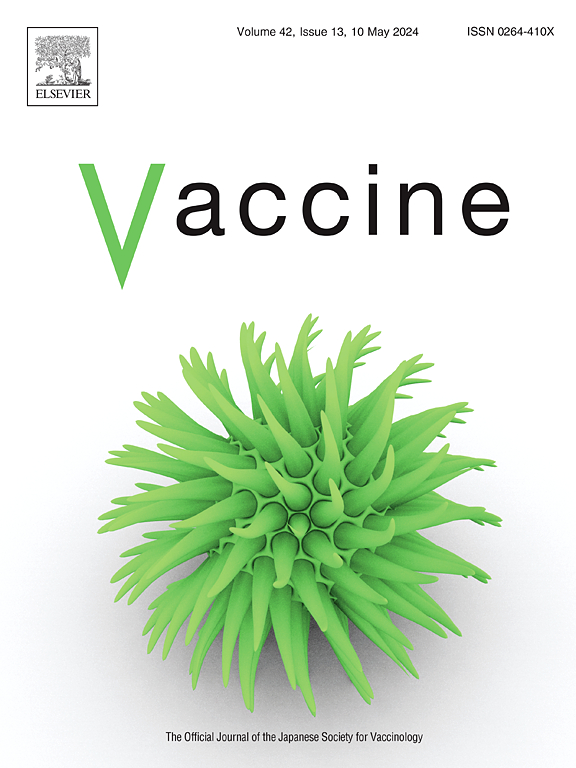IF 4.5
3区 医学
Q2 IMMUNOLOGY
引用次数: 0
摘要
COVID-19 大流行凸显了 mRNA 疫苗及其纳米技术载体作为传染病对策的影响力。作为合成脂质纳米颗粒或哺乳动物病毒的替代品,我们开发了一种基于烟草花叶病毒(TMV)的 mRNA 疫苗递送平台。具体来说,我们利用从烟草花叶病毒(TMV)中提纯的衣壳蛋白来包装表达来自 SARS-CoV-2 Omicron 株的受体结合域(RBD)的自扩增 Nodamura 复制子。该复制子构建体包含烟草花叶病毒(TMV)的组装源序列,用于封装和稳定 mRNA。纳米颗粒疫苗是利用纯化的 TMV 衣壳蛋白和体外转录的 mRNA 盒通过体外组装获得的。细胞检测证实了自扩增 mRNA 疫苗的传递、转基因的扩增以及目标蛋白 RBD 在哺乳动物细胞中的表达。小鼠免疫后产生了 RBD 特异性 IgG 抗体,体外中和试验证明这种抗体能中和 SARS-CoV-2 病毒。TMV 平台纳米技术不需要超低温冷冻箱来储存或分发;体外组装方法提供了 "即插即用 "功能,可在新菌株或疾病出现时迅速调整疫苗配方。最后,还有机会通过分子农业技术在植物中生产和自我组装候选疫苗,这样就可以在本地区生产,而且可以为世界上资源匮乏的地区做出贡献。本文章由计算机程序翻译,如有差异,请以英文原文为准。
A replicon-based COVID-19 vaccine candidate delivered by tobacco mosaic virus-like particles
The COVID-19 pandemic highlights the opportunity for mRNA vaccines and their nanotechnology carriers to make an impact as a countermeasure to infectious disease. As alternative to the synthetic lipid nanoparticles or mammalian viruses, we developed a tobacco mosaic virus (TMV)-based mRNA vaccine delivery platform. Specifically, purified coat protein from TMV was used to package a self-amplifying Nodamura replicon expressing the receptor binding domain (RBD) from the Omicron strain of SARS-CoV-2. The replicon construct contains the origin of assembly sequence from the tobacco mosaic virus (TMV) for encapsulation and mRNA stabilization. The nanoparticle vaccine was obtained through in vitro assembly using purified TMV coat proteins and in vitro transcribed mRNA cassettes. Cell assays confirmed delivery of self-amplifying mRNA vaccine, amplification of the transgene and expression of the target protein, RBD, in mammalian cells. Immunization of mice yielded RBD-specific IgG antibodies that demonstrated neutralization of SARS-CoV-2 using an in vitro neutralization assay. The TMV platform nanotechnology does not require ultralow freezers for storage or distribution; and the in vitro assembly method provide ‘plug-and-play’ to adapt the vaccine formulation rapidly as new strains or diseases emerge. Finally, opportunity exists to produce and self-assemble the vaccine candidate in plants through molecular farming techniques, which may allow production in the region-for the region and could make a contribution to less resourced areas of the world.
求助全文
通过发布文献求助,成功后即可免费获取论文全文。
去求助
来源期刊

Vaccine
医学-免疫学
CiteScore
8.70
自引率
5.50%
发文量
992
审稿时长
131 days
期刊介绍:
Vaccine is unique in publishing the highest quality science across all disciplines relevant to the field of vaccinology - all original article submissions across basic and clinical research, vaccine manufacturing, history, public policy, behavioral science and ethics, social sciences, safety, and many other related areas are welcomed. The submission categories as given in the Guide for Authors indicate where we receive the most papers. Papers outside these major areas are also welcome and authors are encouraged to contact us with specific questions.
 求助内容:
求助内容: 应助结果提醒方式:
应助结果提醒方式:


